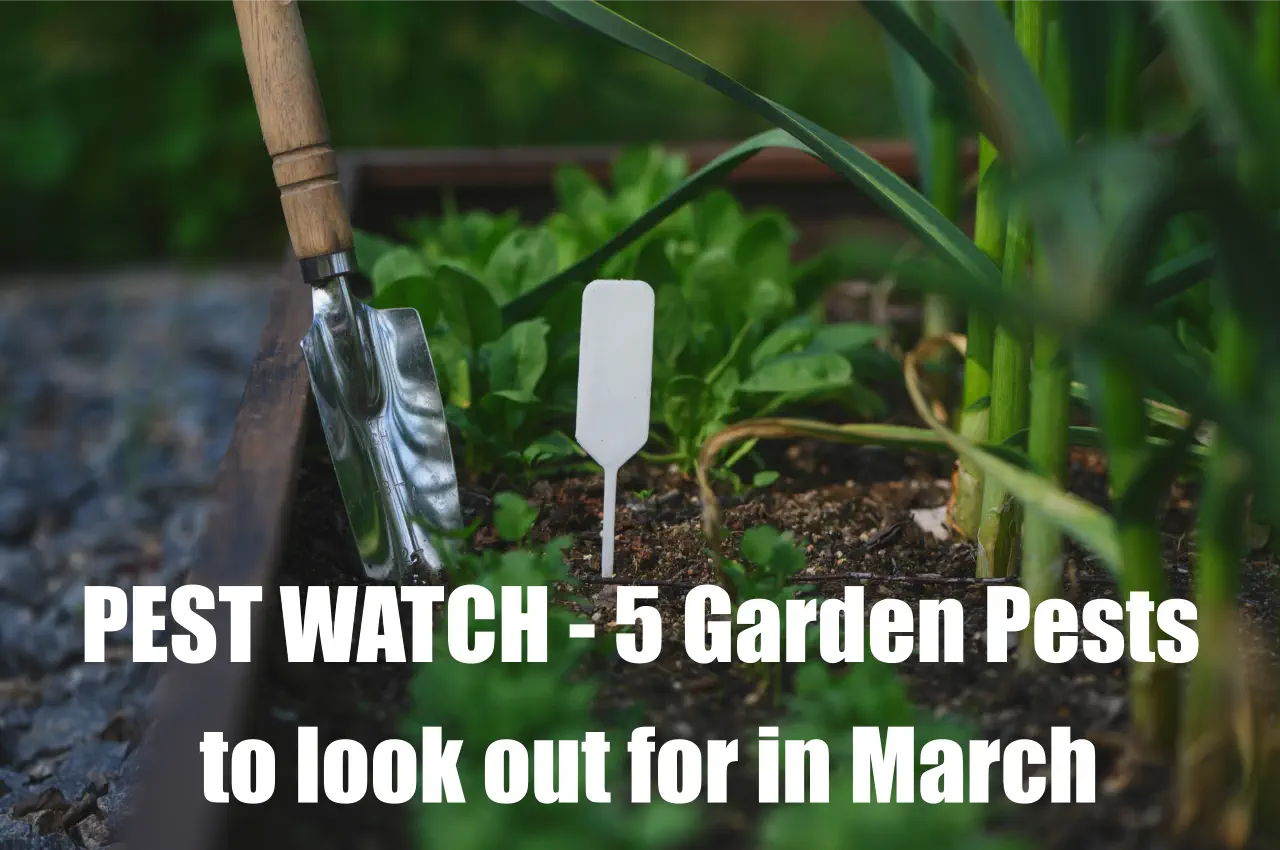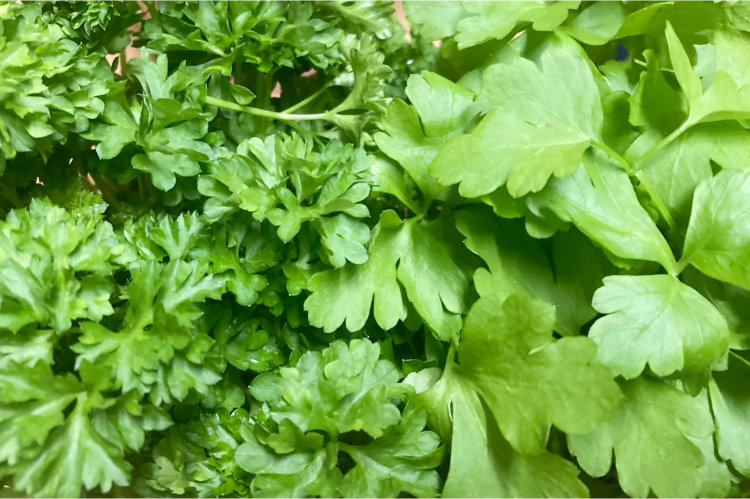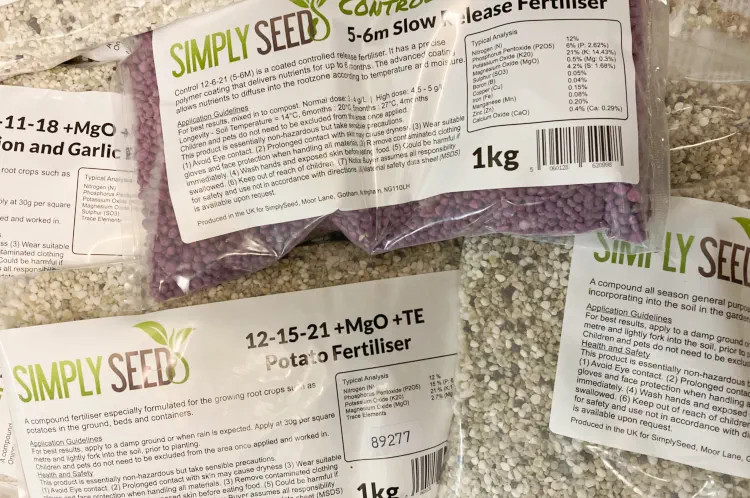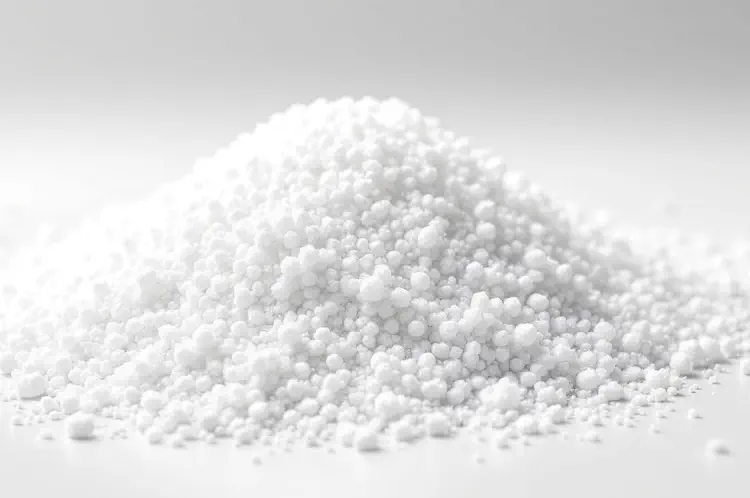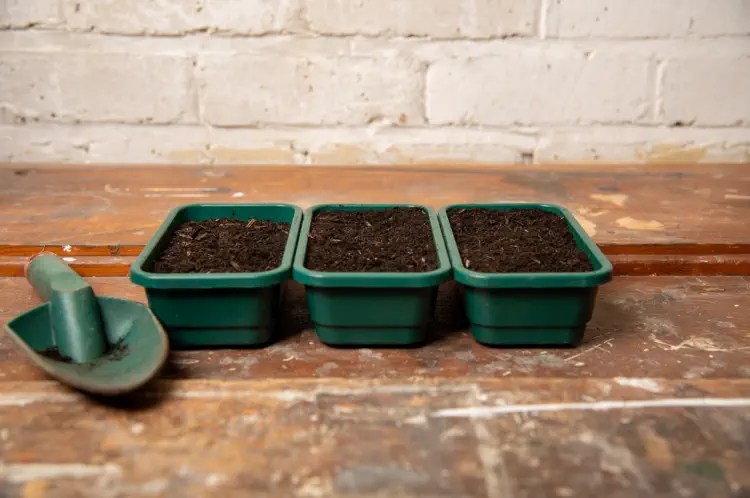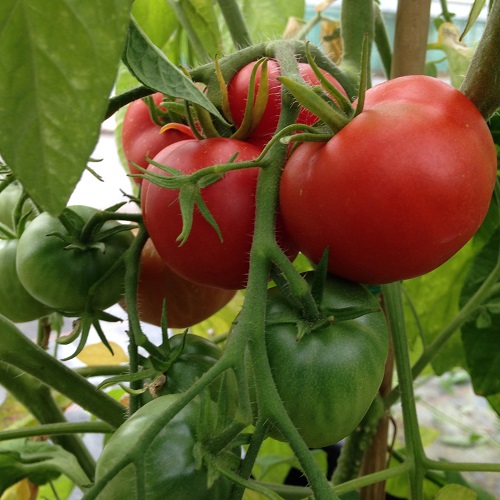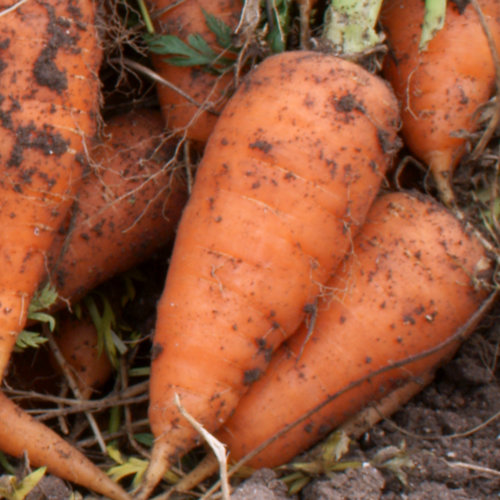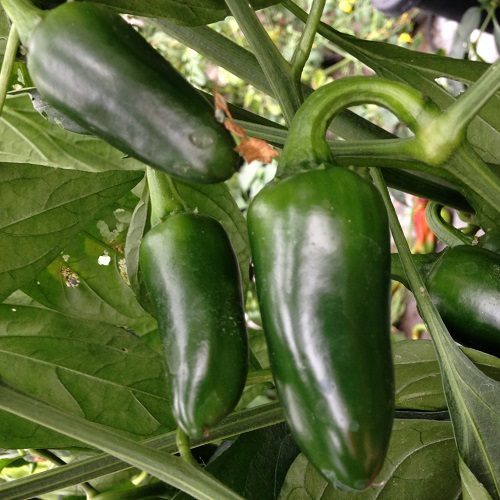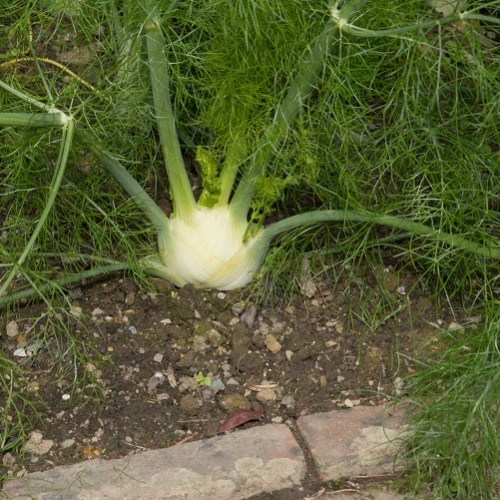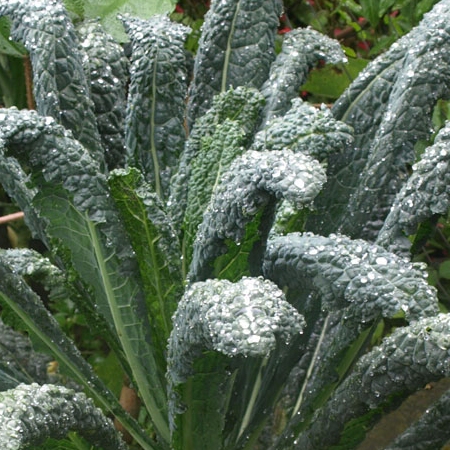As the days begin to lengthen and temperatures slowly rise, gardeners eagerly prepare for the start of the growing season. However, along with the promise of new growth and vibrant blooms, March also brings the emergence of common garden pests eager to feast on tender plants.
Here, we'll explore five garden pests to watch out for in March and provide practical tips for effectively managing them.
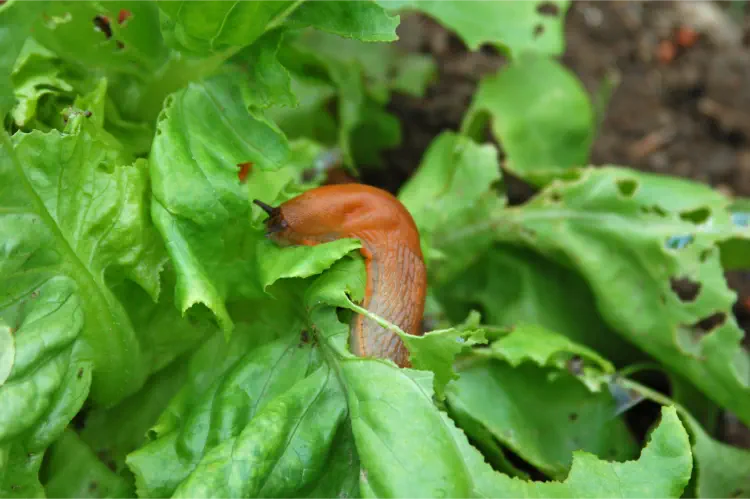
Slugs and Snails
Slugs and snails are notorious garden pests that can cause significant damage to young plants, especially during the damp conditions typical of March in the UK. These mollusks feed voraciously on the tender leaves and stems of a wide variety of plants, leaving behind unsightly holes and decimating seedlings.
Controlling slugs and snails requires a multifaceted approach, incorporating both preventive measures and active management strategies. Here are some tips for effectively managing these garden pests:
- Barriers: Creating physical barriers can be an effective way to prevent slugs and snails from accessing vulnerable plants. Copper tape is a popular option, as slugs and snails receive a mild electric shock when they come into contact with it, deterring them from crossing. Additionally, you can place barriers made from materials like diatomaceous earth or crushed eggshells around plant beds to create obstacles for these pests.
- Natural Predators: Encouraging natural predators of slugs and snails, such as frogs, toads, hedgehogs, and birds, can help keep populations in check. Providing suitable habitats, such as ponds for amphibians or bird feeders for avian predators, can attract these beneficial creatures to your garden. Additionally, consider creating shelters like log piles or rock piles where predators can hide and hunt for prey.
- Trap and Remove: Setting traps to capture and remove slugs and snails can be an effective way to reduce their numbers. Beer traps, consisting of containers filled with beer or yeast solution, attract slugs and snails, which then drown in the liquid. Alternatively, you can manually remove these pests from your garden during evening hours when they are most active, either by handpicking them or using a flashlight to spot them.
- Cultural Practices: Adopting certain cultural practices can help minimize slug and snail damage in your garden. For example, watering plants in the morning rather than the evening can reduce moisture levels and make the environment less favorable for these pests. Additionally, avoiding overmulching and maintaining good garden hygiene by removing debris and hiding spots can make it less hospitable for slugs and snails to thrive.
- Organic Controls: There are several organic controls available for managing slug and snail populations. Products containing iron phosphate, a naturally occurring compound, can be applied as bait to attract and kill these pests without harming other wildlife. Additionally, slug nematodes, microscopic roundworms that parasitize slugs and snails, can be applied to the soil to target larvae and reduce populations over time.
By implementing these strategies, gardeners can effectively control slugs and snails in their gardens, protecting their plants from damage and promoting a healthy and thriving garden ecosystem.
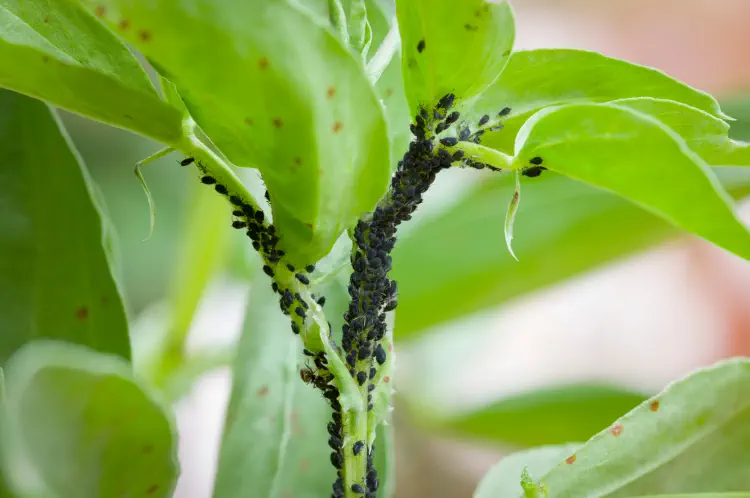
Aphids
Aphids are among the most common garden pests, and as temperatures rise in March, their activity increases, making them a significant concern for gardeners. These small, sap-sucking insects can quickly multiply and infest plants, causing stunted growth, distorted leaves, and weakening overall plant health.
To effectively manage aphids in the garden, it's essential for gardeners to be proactive and vigilant. Here are some tips for controlling aphids and minimizing their damage:
- Early Detection: Encourage readers to regularly inspect their plants for signs of aphid infestation, including clusters of tiny, soft-bodied insects on leaves, stems, and buds. Early detection allows for prompt intervention, preventing aphid populations from spiraling out of control.
- Mechanical Control: One of the simplest and most environmentally friendly methods for controlling aphids is to physically remove them from plants. Suggest using a strong jet of water from a garden hose to dislodge aphids from plant surfaces. This method can effectively reduce aphid populations and minimize damage without the use of chemicals.
- Beneficial Insects: Introducing natural predators of aphids, such as ladybugs (ladybirds), lacewings, and parasitic wasps, can help keep aphid populations in check. Ladybugs, in particular, are voracious aphid predators and can consume large numbers of aphids in a short period. Encourage readers to attract and support these beneficial insects by planting a diverse range of flowering plants, providing shelter and nesting sites, and avoiding the use of broad-spectrum pesticides that can harm beneficial insects.
- Homemade Remedies: Gardeners can create their own organic aphid control solutions using ingredients commonly found in the kitchen. For example, a mixture of mild dish soap and water can be sprayed onto plants to suffocate and deter aphids. Alternatively, a solution of neem oil, a natural insecticide derived from the neem tree, can disrupt aphid feeding and reproduction.
- Organic Sprays: There are several organic insecticidal sprays available commercially such as SB Plant Invigorator that can effectively control aphids while minimizing harm to beneficial insects and other wildlife. Look for products containing ingredients like pyrethrin, a botanical insecticide derived from chrysanthemum flowers, or insecticidal soaps made from potassium salts of fatty acids.
By incorporating these strategies into their gardening practices, you can effectively manage aphid infestations and maintain healthy, thriving plants throughout the growing season. Additionally, fostering a balanced ecosystem in the garden with diverse plantings and natural predators can help prevent future aphid outbreaks.
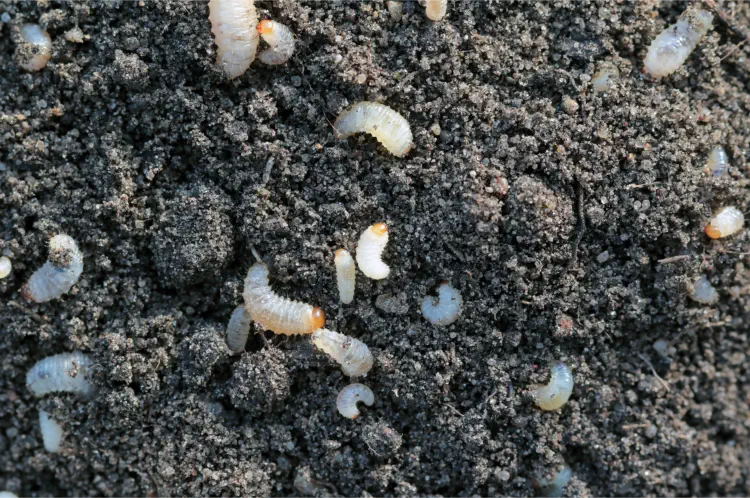
Vine Weevils
Vine weevils are insidious pests that can cause significant damage to container plants and ornamentals, particularly during the night when they emerge to feed. The larvae of vine weevils feed on plant roots, weakening the plant's ability to uptake water and nutrients, ultimately leading to wilting and potentially death.
To effectively manage vine weevils and protect container plants and ornamentals from their destructive effects, it's important for gardeners to employ a combination of preventive measures and targeted controls. Here are some strategies for controlling vine weevils:
- Nematodes: One of the most effective treatments is the use of vine weevil nematodes, such as Heterorhabditis bacteriophora or Steinernema feltiae, as a biological control for vine weevils. These microscopic roundworms seek out and parasitize the larvae of vine weevils in the soil, effectively reducing their populations. Nematodes should be applied to moist soil in the evening when vine weevil larvae are most active, following the manufacturer's instructions for application rates and timing.
- Biological Controls: Bacillus thuringiensis (Bt) is a naturally occurring soil bacterium that produces proteins toxic to certain insect larvae, including vine weevil larvae. Gardeners can apply Bt-based biological insecticides to the soil around affected plants to target and control vine weevil populations. These products are safe for use around humans, pets, and beneficial insects, making them an environmentally friendly option for vine weevil control.
- Physical Barriers: Implementing physical barriers can help prevent adult vine weevils from laying eggs in container plants and ornamentals. Encourage readers to use fine mesh or netting to cover the surface of potting soil or the base of plants, effectively blocking access for egg-laying females. Additionally, wrapping the stems of plants with sticky tape can deter crawling vine weevil adults from reaching foliage and laying eggs.
- Cultural Practices: Adopting certain cultural practices can help reduce the risk of vine weevil infestations in the garden. Recommend readers inspect new plants for signs of vine weevil larvae before introducing them to their gardens, avoiding plants with root damage or signs of adult weevil activity. Encourage the use of well-draining potting mixtures and avoiding overwatering, as damp soil can attract vine weevil adults for egg-laying.
- Monitoring and Early Intervention: Regular monitoring of container plants and ornamentals for signs of vine weevil activity is essential for early detection and intervention. Encourage readers to inspect plant roots for signs of damage and monitor for adult weevils on foliage during the evening hours. Promptly remove and dispose of any affected plants to prevent the spread of vine weevils to neighboring plants.
By incorporating these strategies into their gardening practices, gardeners can effectively control vine weevils and protect their container plants and ornamentals from damage, ensuring healthy and thriving garden displays throughout the growing season.
Plants Susceptible to Vine Weevil Infestations
Vine weevils are known for their broad appetite, targeting a wide range of plants both indoorsin the greenhouse and outdoors. The larvae primarily feed on the roots of plants, causing significant damage that can lead to wilting, stunted growth, and in severe cases, plant death. While vine weevils are known to attack various plant species, some are particularly susceptible to infestations. Here are some common examples:
- Rhododendrons and Azaleas: These popular ornamental shrubs are highly susceptible to vine weevil damage, especially when grown in containers or pots. Vine weevils can quickly weaken these plants by feeding on their root systems, leading to poor growth and reduced flowering.
- Primroses and Cyclamen: Both primroses and cyclamen are favorite targets for vine weevils, particularly when grown in pots or containers. The shallow root systems of these plants make them vulnerable to damage from vine weevil larvae, resulting in yellowing foliage and overall decline.
- Fuchsias: Fuchsias are beloved flowering plants that are unfortunately susceptible to vine weevil infestations. The larvae of vine weevils feed on the roots of fuchsias, causing them to become weak and prone to wilting. Vigilance is essential when growing fuchsias, especially in containers or hanging baskets.
- Strawberries: Strawberry plants are also at risk of vine weevil damage, particularly when grown in containers or raised beds. Vine weevil larvae can feed on the roots of strawberry plants, reducing their vigor and fruit production. Gardeners should take preventive measures to protect their strawberry crops from these pests.
- Bedding Plants: Various bedding plants like begonias, impatiens, and lobelias are susceptible to vine weevil infestations, especially when planted in containers or hanging baskets. These annuals and tender perennials can suffer significant damage from vine weevil larvae feeding on their root systems, leading to poor performance and diminished aesthetics.
While these are some examples of plants commonly targeted by vine weevils, it's important to note that these pests can potentially infest a wide range of plants, including both ornamentals and edibles. Gardeners should remain vigilant and take proactive measures to monitor for signs of vine weevil activity and implement appropriate control strategies to protect their plants from damage.
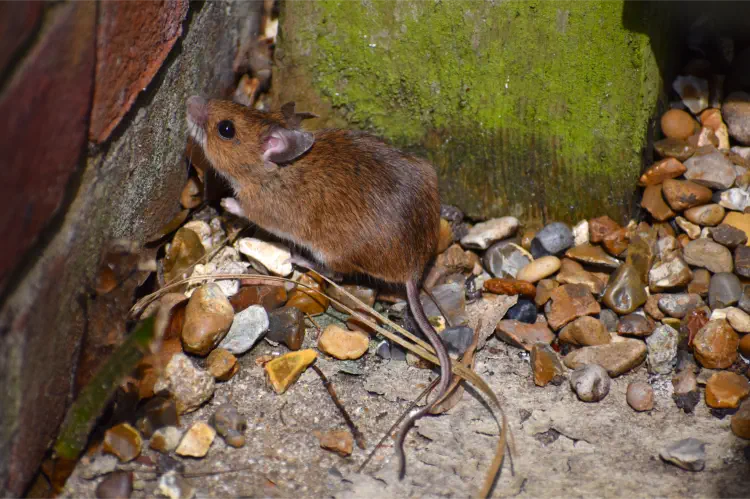
Mice
As temperatures rise in March, mice will be become more active, seeking food and nesting sites in garden areas. These rodents can wreak havoc on garden crops by nibbling on seeds, bulbs, and young shoots, potentially causing significant damage to plants and reducing yields.
To effectively manage mice and protect garden crops from their destructive behavior, it's important for gardeners to implement a combination of preventive measures and active control strategies. Here are some tips for controlling mice in the garden:
- Remove Sources of Food and Shelter: Encourage readers to take steps to eliminate sources of food and shelter that may attract mice to the garden. This includes cleaning up fallen fruits and vegetables, securing compost bins and garbage cans, and removing clutter and debris where mice can hide and nest. Additionally, advise readers to store birdseed and pet food in sealed containers to prevent attracting mice to the garden.
- Seal Entry Points: Mice can enter garden sheds, outbuildings, and even homes through small cracks and openings in walls and foundations. Recommend readers inspect their garden structures for potential entry points and seal them with caulk, weatherstripping, or wire mesh to prevent mice from gaining access. Pay particular attention to gaps around doors and windows, as well as holes in walls and floors.
- Use Mouse Traps: Strategically placed mouse traps can be an effective way to control mice in the garden. Encourage readers to set traps near vulnerable plants or areas where mice are likely to frequent, such as along garden borders or near compost bins. Consider using snap traps or humane live-catch traps, and bait them with peanut butter or seeds to attract mice.
- Deterrents: There are several natural deterrents that can help repel mice from the garden. Recommend readers plant strong-smelling herbs like mint, lavender, and rosemary around garden borders to deter mice from entering. Additionally, sprinkling used cat litter or cotton balls soaked in peppermint oil near potential entry points may help discourage mice from nesting in garden structures.
- Maintain Cleanliness: Stress the importance of maintaining a clean and tidy garden space to discourage mice and other pests. Advise readers to regularly remove fallen leaves and debris, store garden tools and equipment properly, and harvest ripe fruits and vegetables promptly to minimize attractive food sources for mice. Additionally, encourage readers to keep grass and vegetation trimmed to reduce hiding places for mice and other rodents.
Are Mice Eating Your Seedlings: A Gardener's Challenge
One of the most frustrating challenges gardeners face, particularly in early spring, is the destruction of tender seedlings by mice. As temperatures begin to warm up in March, mice become more active, and their voracious appetite for young shoots and seeds can wreak havoc on carefully sown gardens.
- Identification of Damage: Recognizing the signs of mice feeding on seedlings is crucial for early intervention. Mice typically leave behind telltale evidence such as nibbled leaves, chewed stems, and missing seeds or seedlings. Broad Beans, Peas, and Sweet Peas are particular favourites. Gardeners may also notice small tunnels or burrows near planting areas, indicating the presence of mice.
- Impact on Garden Crops: The damage caused by mice feeding on seedlings can be devastating, especially for crops that rely on direct seeding or early transplanting. Mice can quickly decimate entire rows of seedlings, leading to gaps in garden beds and reduced yields come harvest time. Additionally, the loss of young plants can set back the planting schedule and require replanting efforts, further delaying the growing season.
Preventive Measures: To protect seedlings from being eaten by mice, gardeners can implement several preventive measures:
- Protective Barriers: Creating physical barriers around seedlings can deter mice from accessing them. Consider using materials like wire mesh or plastic cloches to cover newly sown seeds or young transplants until they become established.
- Seedling Trays: Starting seeds indoors or in protected environments such as cold frames or greenhouse trays can help shield seedlings from mice. Once seedlings have grown larger and stronger, they can be safely transplanted into outdoor garden beds.
- Natural Deterrents: Some gardeners have had success using natural deterrents to discourage mice from feeding on seedlings. Planting strong-smelling herbs like garlic, onions, or marigolds around garden borders may help repel mice. Additionally, sprinkling used cat litter or predator urine around planting areas may deter mice from approaching.
Active Control Strategies: In cases where mice infestations are severe, gardeners may need to employ active control strategies to reduce populations:
- Mouse Traps: Strategically placing mouse traps near planting areas can help capture mice before they have a chance to damage seedlings. Consider using snap traps or humane live-catch traps baited with peanut butter or seeds to attract mice.
- Natural Predators: Encouraging natural predators of mice, such as owls, hawks, and domestic cats, to frequent the garden can help keep populations in check. Providing habitat and nesting sites for these predators may help attract them to the garden.
Protecting seedlings from being eaten by mice requires a combination of preventive measures and active intervention. By implementing these strategies, gardeners can safeguard their young plants and ensure a successful growing season free from the devastation caused by hungry mice.

Sciarid Flies (Fungus Gnats)
Sciarid flies, commonly known as fungus gnats, can become a nuisance both indoors and in greenhouses, particularly during periods of wet weather in March. These tiny flies are attracted to moist, organic-rich soil and compost, where they lay their eggs. The larvae of sciarid flies feed on organic matter and plant roots, which can stunt growth and weaken plants, making them more susceptible to other pests and diseases.
Identification of Infestation: Gardeners may notice adult sciarid flies hovering around plants or swarming near soil surfaces, particularly in areas with high moisture levels. Additionally, the presence of small, white larvae in the soil or around plant roots is indicative of a sciarid fly infestation.
Preventive Measures: To combat sciarid flies and prevent infestations, it's suggested to try the following preventive measures:
- Allow Soil Surface to Dry Out: Sciarid flies thrive in moist environments, so allowing the soil to dry out between waterings can help deter adult flies from laying eggs. Gardeners should water plants only when necessary and to avoid overwatering, especially in seed trays or containers where excess moisture can accumulate.
- Use Well-Draining Potting Mixtures: Using well-draining potting mixtures can help prevent waterlogging and reduce the risk of sciarid fly infestations. It's recommended to choose potting mixes specifically formulated for their intended plants and ensure containers have adequate drainage holes to allow excess water to escape.
- Avoid Overwatering Plants: Overwatering seed trays and containers is a common cause of sciarid fly infestations, as excessive moisture creates ideal breeding conditions for these pests. Water seedlings sparingly and to allow the soil surface to dry out between waterings. Consider using bottom-watering techniques or watering from the base of containers to minimize moisture on the soil surface.
Active Control Strategies: In cases where sciarid fly infestations are already present, gardeners can employ active control strategies to reduce populations:
- Biological Controls: Predatory nematodes, such as Steinernema feltiae, can be effective biological controls for sciarid fly larvae. These microscopic roundworms seek out and parasitize the larvae in the soil, reducing populations over time. Nematodes can be applied to affected areas according to the manufacturer's instructions for best results.
- Yellow Sticky Traps: Yellow sticky traps placed near affected plants can help capture adult sciarid flies, reducing their numbers and preventing further egg-laying. Placing traps at soil level or hanging them above plants to intercept flying adults.
By incorporating these preventive measures and active control strategies into their gardening practices, gardeners can effectively manage sciarid fly infestations and protect their plants from damage caused by these pesky pests. Additionally, the importance of moisture management, particularly in seed trays and containers, can help prevent future infestations and promote healthier plant growth.
All blog content on this page is copyright of SimplySeed and is not to be reproduced without prior written permission. ©

